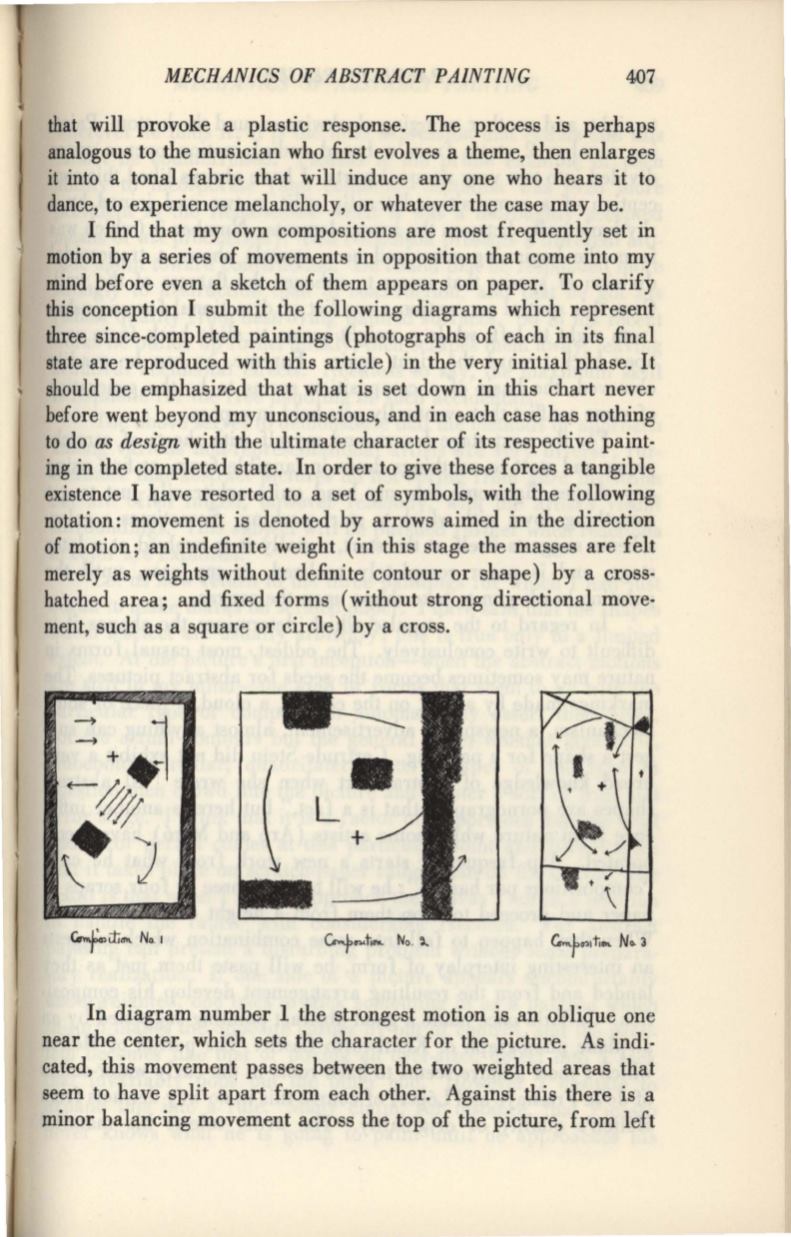
MECHANICS OF ABSTRACT PAINTING
407
that will provoke a plastic response. The process is perhaps
analogous to the musician who first evolves a theme, then enlarges
it into a tonal fabric that will induce any one who hears it to
dance, to experience melancholy, or whatever the case may be.
I find that my own compositions are most frequently set in
motion by a series of movements in opposition that come into my
mind before even a sketch of them appears on paper. To clarify
this conception I submit the following diagrams which represent
three since-completed paintings (photographs of each in its final
state are reproduced with this article) in the very initial phase. It
should be emphasized that what is set down in this chart never
before weqt beyond my unconscious, and in each case has nothing
to do
as design
with the ultimate character of its respective paint–
ing in the completed state. In order to give these forces a tangible
existence I have resorted to a set of symbols, with the following
notation: movement is denoted by arrows aimed in the direction
of motion; an indefinite weight (in this stage the masses are felt
merely as weights without definite contour or shape) by a cross–
hatched area; and fixed forms (without strong directional move·
ment, such as a square or circle) by a cross.
\
In diagram number I the strongest motion is an oblique one
near the center, which sets the character for the picture. As indi–
cated, this movement passes between the two weighted areas that
seem to have split apart from each other. Against this there is a
minor balancing movement across the top of the picture, from left


